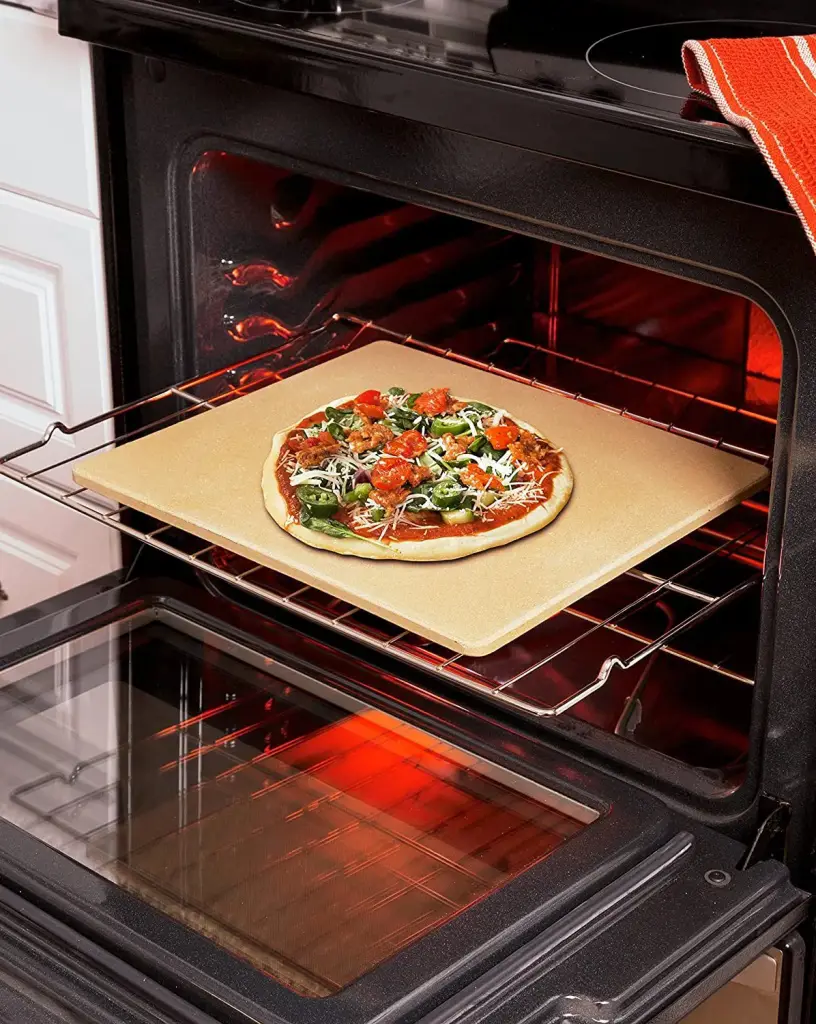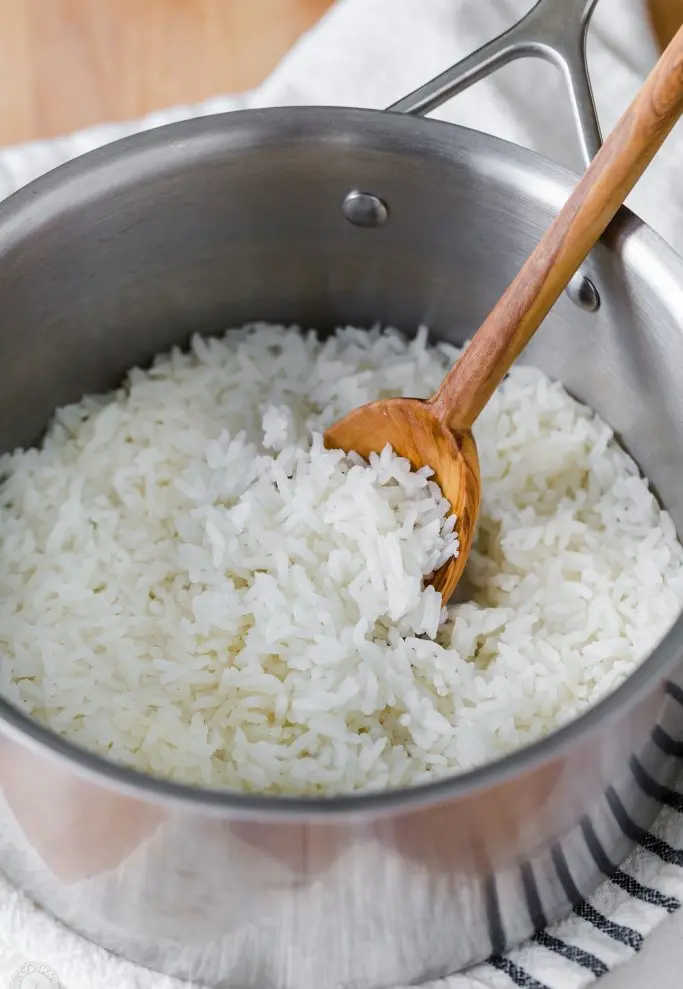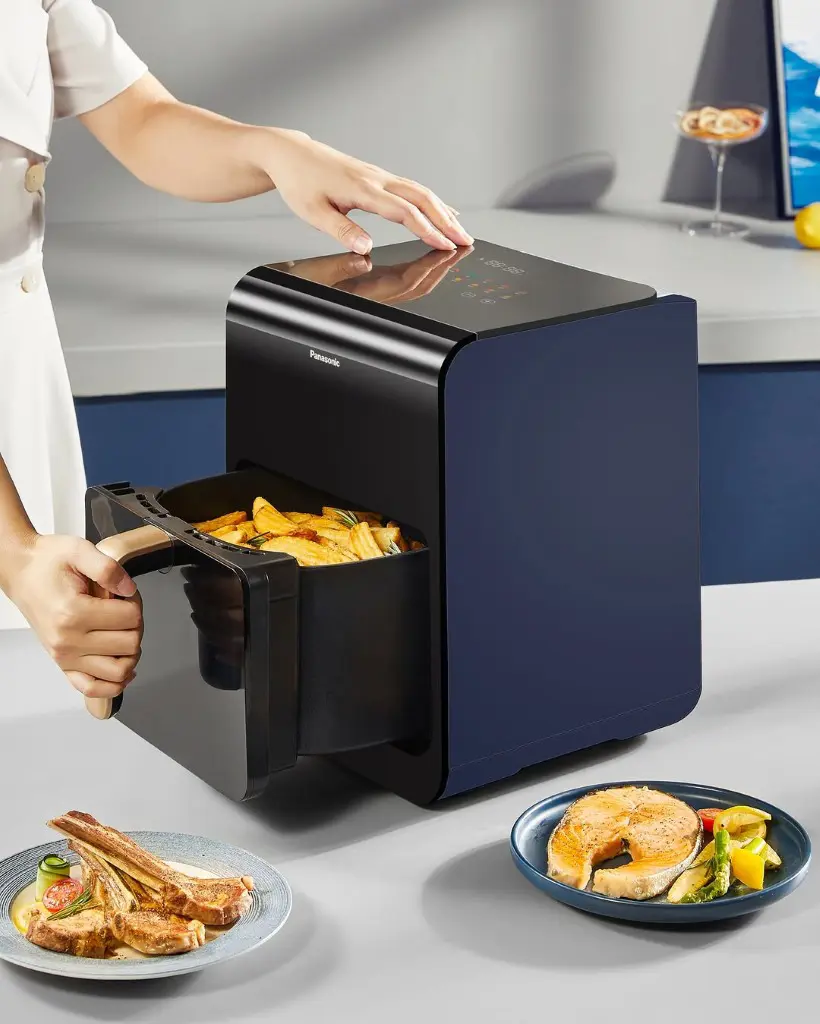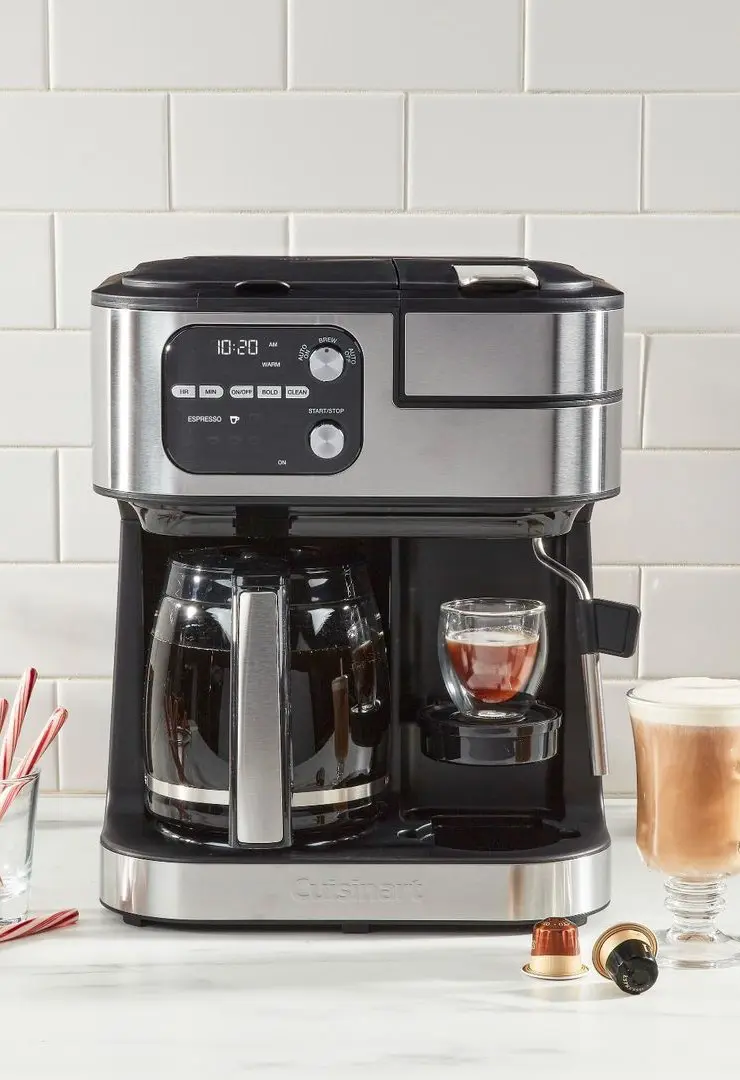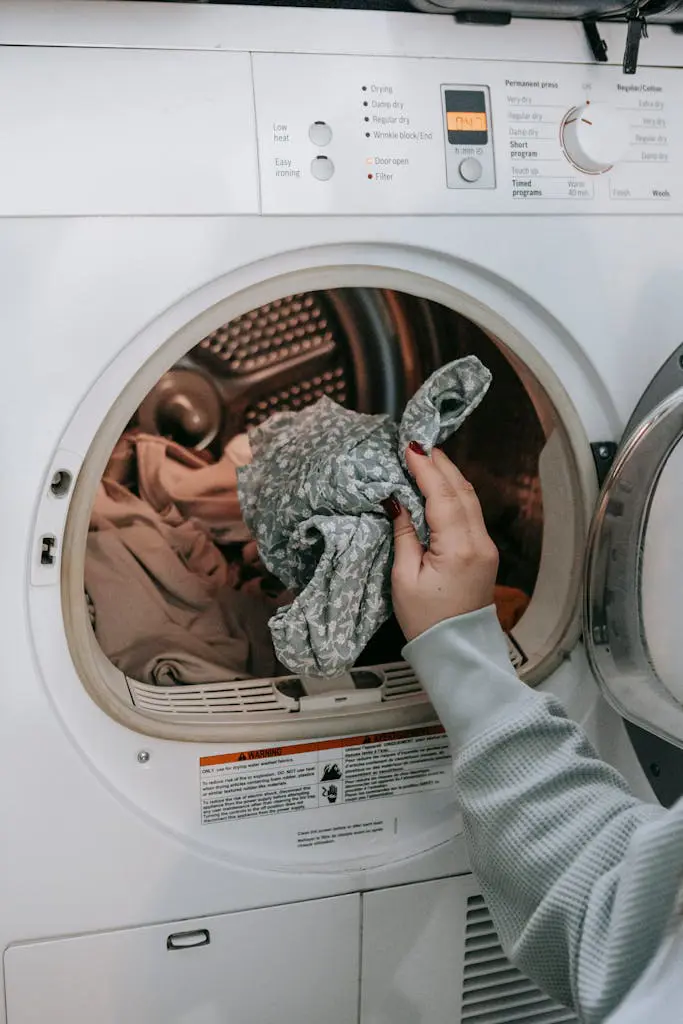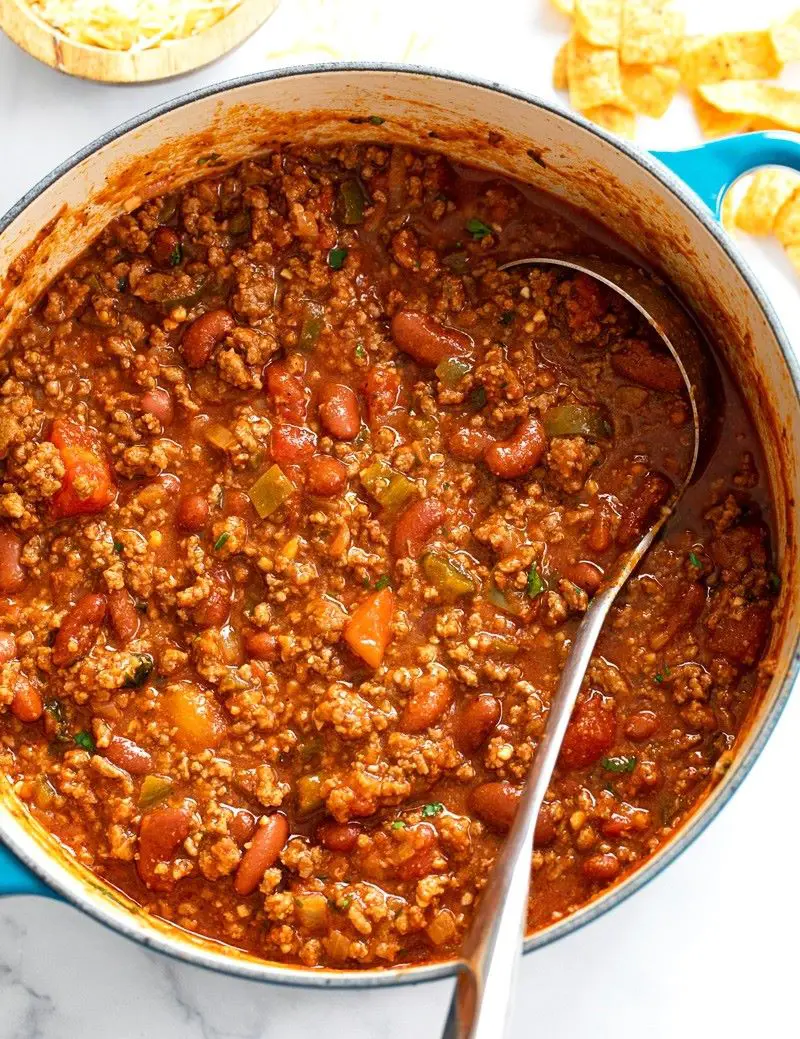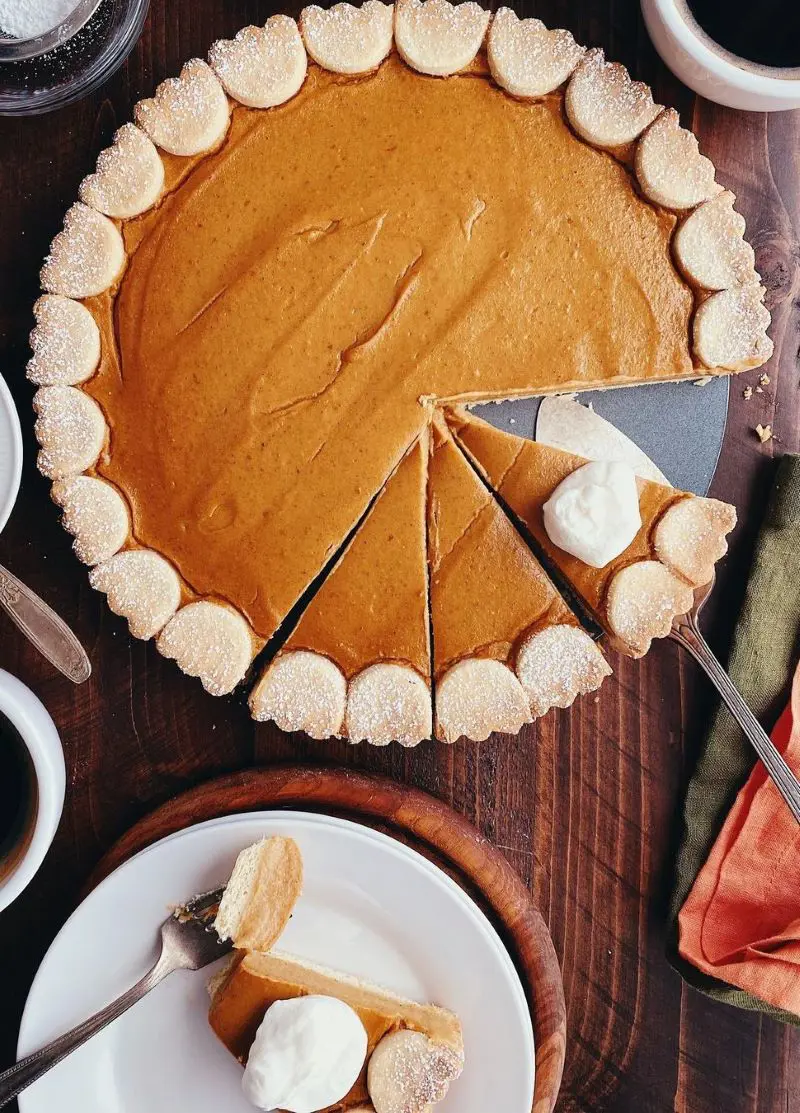Pizza stones are essential for achieving a crispy crust, but their effectiveness depends on proper cleaning and maintenance. These porous surfaces can absorb remnants of cheese, tomato sauce, and oil, while excessive baking time can lead to charring and blackening.
Learning how to clean a pizza stone correctly is crucial for preserving its quality and ensuring delicious results. Proper care will extend the life of your stone and consistently deliver that perfect, crispy crust you crave.
How To Clean The Pizza Stone: 3 Ways
Pizza stones can be cleaned with a water-moistened cloth, brushes, or, for bad stains, a baking soda paste. Never use soap or commercial cleaners. The perfumes from soap and the soapy residue can settle on the porous surface, affecting the taste of the food.
Here are some best way to clean a pizza stone:
1. Using Cloth And Spatula
The cleaning and maintenance of your pizza stone can make a difference between a long and poor life it. Do the following activities to maintain your stone in mint condition:
Allow the Stone to Cool Off Completely:
Patience is a virtue after using your pizza stone. Be it having served the pizza right from the stone or taking it onto some other surface, you are required to let the stone cool down completely before cleaning.
How long this takes depends upon the thickness of the stone and the room temperature. You must never hurry the cooling process by suddenly plunging the stone in water or even by placing it in a cold environment. Sharp temperature changes can crack or shatter the stone.
Scrape Away Food Residue:
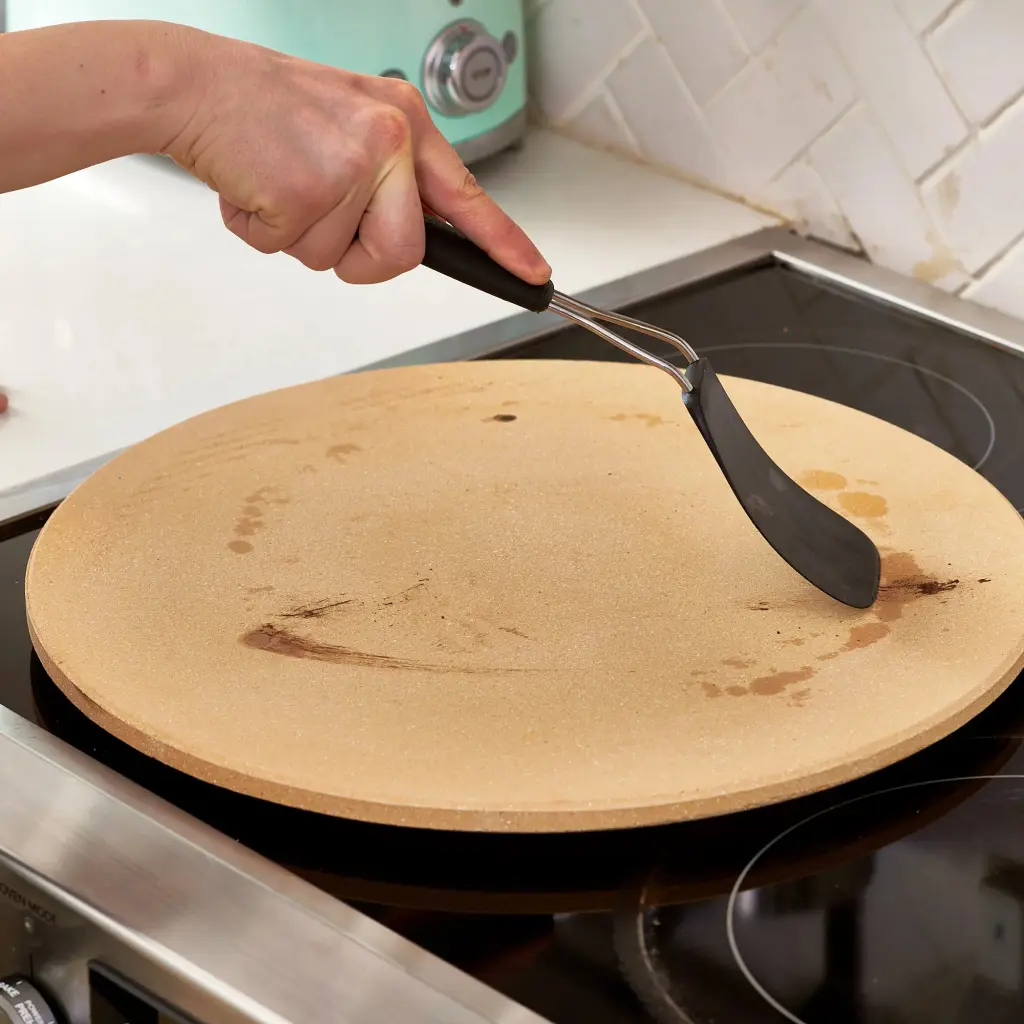
Let it cool, and then use a rubber or plastic spatula to scrape off the burned-on cheese, burned toppings, and other debris off the stone. Avoid using cutlery as these would scratch or damage the surface of the stone. Be firm but in a gentle fashion, working in a circular motion to loosen stubborn residue.
Clean Down Stone:
After wiping off the apparent food from it, take a clean microfiber cloth and moisten it slightly with warm water. After wringing out the excess water, the cloth should remain merely damp-not dripping with water.
Gently wipe down the complete surface of the stone, giving extra attention to the stained portions. Since the stone is porous, it may drink up the water; therefore, use only the amount of moisture that is necessary in this step.
Let the Stone Dry Completely:

Allow it to air dry completely in a dish rack or other well-ventilated area. This is an important step to prevent moisture from building up on it, which could foster mold growth or some other unpleasant odor.
This can take several hours and sometimes even overnight, depending on your environment. Never store or use a pizza stone damp.
Proper Storage:
When it is totally dry, put your pizza stone away in a clean, dry location. Think about a pizza stone rack or padded storage bag for protection from chips or cracks.
2. Using Baking Soda
Baking soda acts as an excellent and soft cleaning agent when oily or food stains do not readily scrape off. This method is best to remove obstinate stains without damaging the porous surface of your pizza stone.
To get rid of stains using baking soda, the following procedure may be followed:
Make the paste for cleaning:
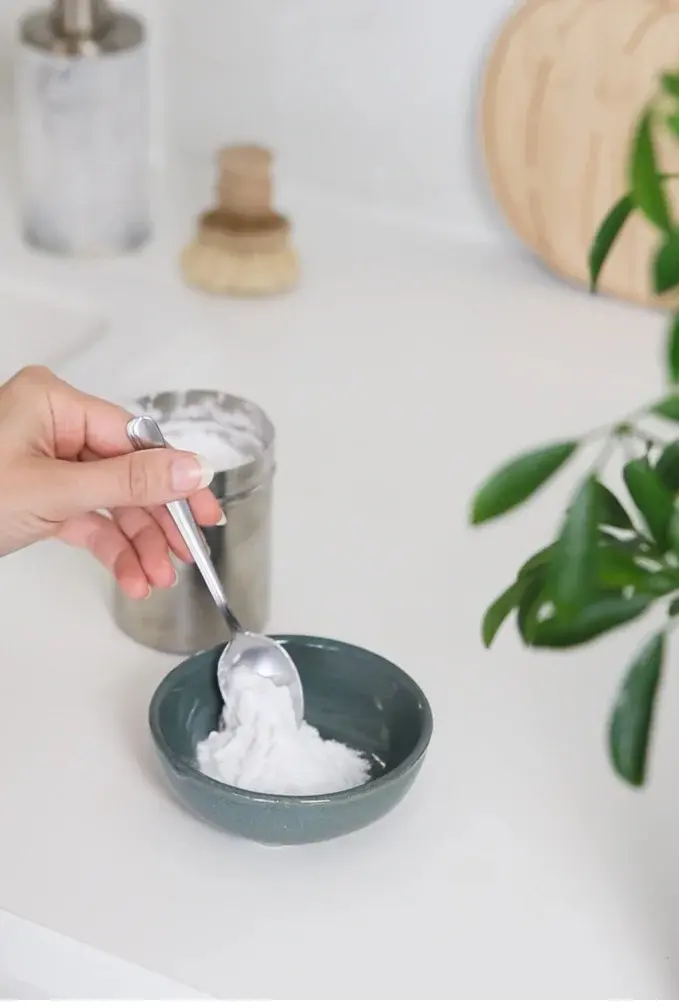
In a small bowl, mix one tablespoon of baking soda with only a few drops of water until you get a thick paste, somewhat the same consistency as toothpaste-thicker, not too runny, but spreadable.
Applying the paste:
Using your fingers or a soft spatula, dip into the baking soda paste, smearing the paste directly onto those stained areas of your pizza stone. Cover the complete area of the stain with a thin, even layer of the paste.
Let it act:
Let the baking soda paste remain on the blemishes for about 10 minutes. During this time, the alkaline nature of baking soda will start to break the grease and food particles stuck to the surface of the stone.
Gentle Scrubbing:
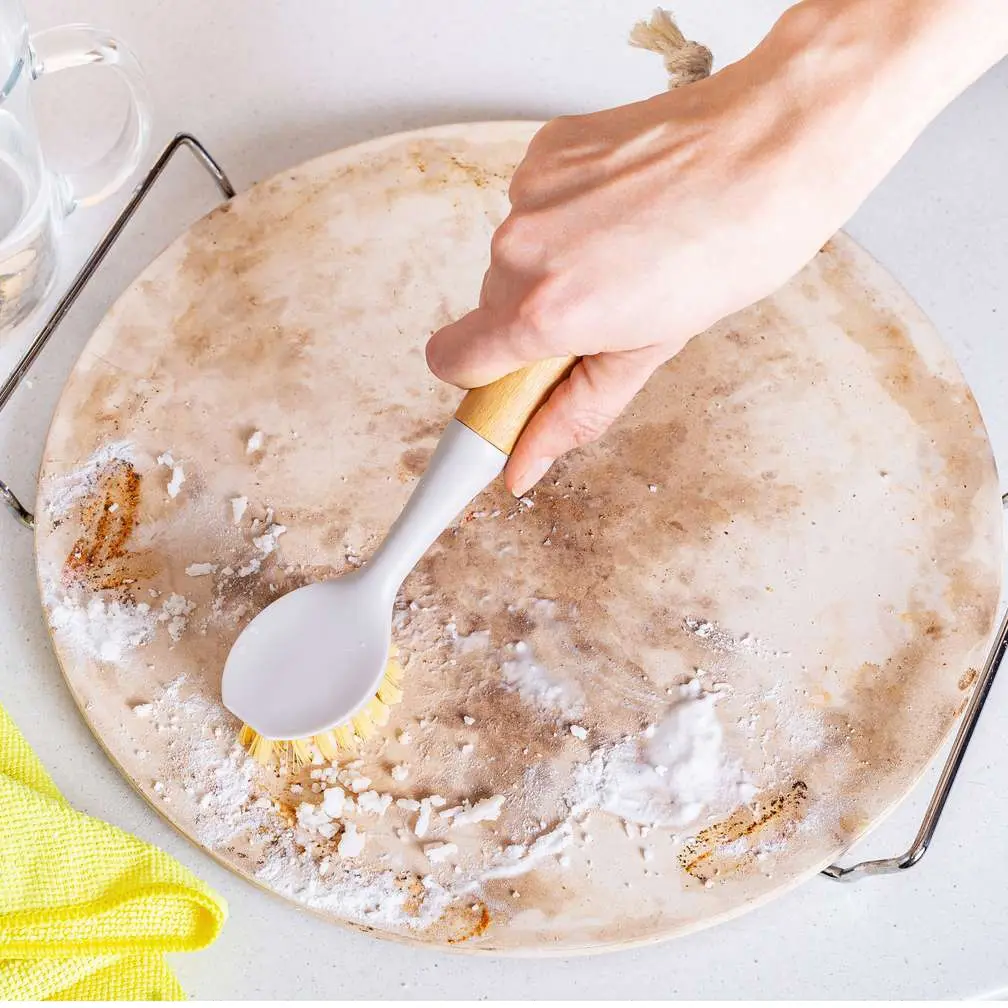
After the dwelling period, proceed with gently scrubbing the problem areas in a circular motion using the nylon-bristled brush. The soft bristles will help lift the stains without scratching or otherwise damaging the surface of the stone. Be patient and thorough, but not heavy-handed in one area.
Clean-up:
After scrubbing over the stains, use only damped microfiber cloth and rub off the baking soda paste and the loosened food residue. And don't forget to rinse the cloth frequently with fresh water to avoid re-spreading residue onto the stone.
Final rinse:
Using a clean and dampened microfiber cloth, give one last wipe after cleaning off the baking soda to remove all remaining baking soda from the stone. Avoid excess water on the stone at all.
Drying:
Allow the pizza stone to air dry completely before use or storage. This prevents any moisture from being trapped within its porous surface, thereby discarding mold or unpleasant odors.
3. Using Oven
While regular maintenance is usually enough, your pizza stone will need deeper cleaning from time to time. For those food stains that just don't appear to go away after several usages, heat cleaning will do the magic.
But remember, this method of cleaning is supposed to be seldom used once or twice during its lifetime since too many heat cleanings may cause some stones to crack.
Do the following steps as a safe heat-cleaning procedure:
1. Preparation:
Allow the pizza stone to be placed on the center rack of the cold oven. This allows the stone to also heat up gradually with the oven, reducing chances of thermal shock. Center it, ensuring it does not touch the oven walls or heating elements.
2. Heat setting:
Set your oven to 500 degrees Fahrenheit or 260 degrees Celsius. This will help in burning off those stubborn stains and residue. If it has a convection setting, avoid using it because it may make hot spots.
3. Heating process:
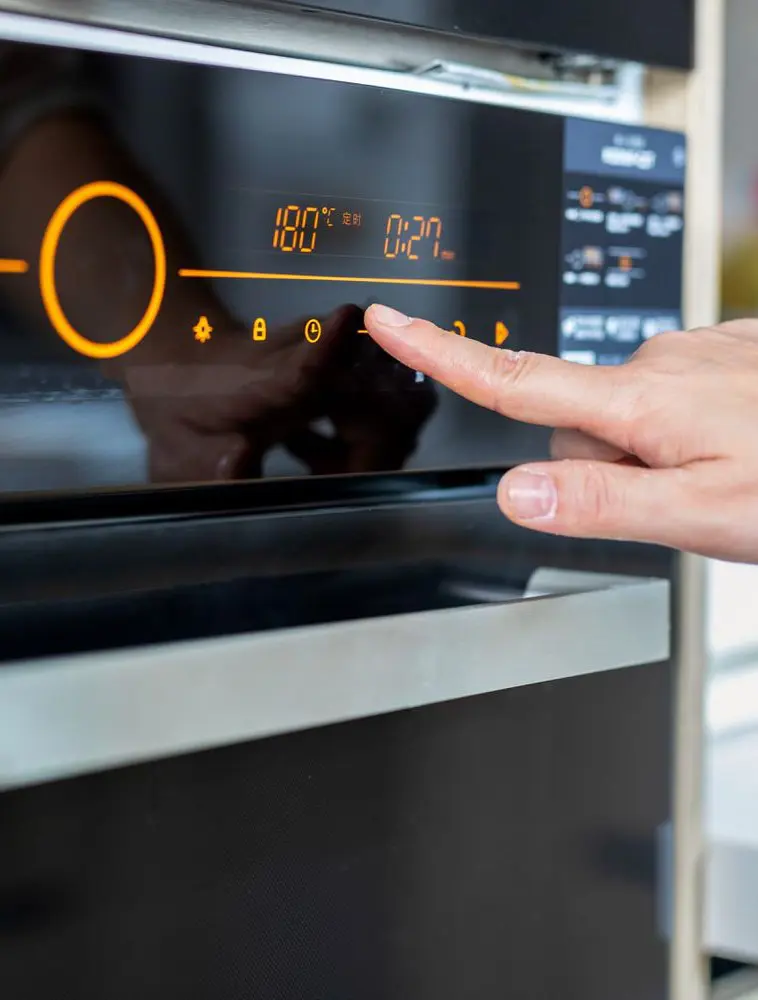
Let the stone and oven preheat to the set temperature together. This is the necessary gentle heating of the stone. Depending on how well your oven operates, it may take 30-45 minutes to reach the appropriate temperature.
4. Baking time:
Once it reaches 500°F, let the stone bake for an hour. This prolonged time under high temperatures will carbonize any remnants of food that may still be there. During this process, you may smell a slight burning smell from the charring of food residues, which is normal.
5. Cooling down:
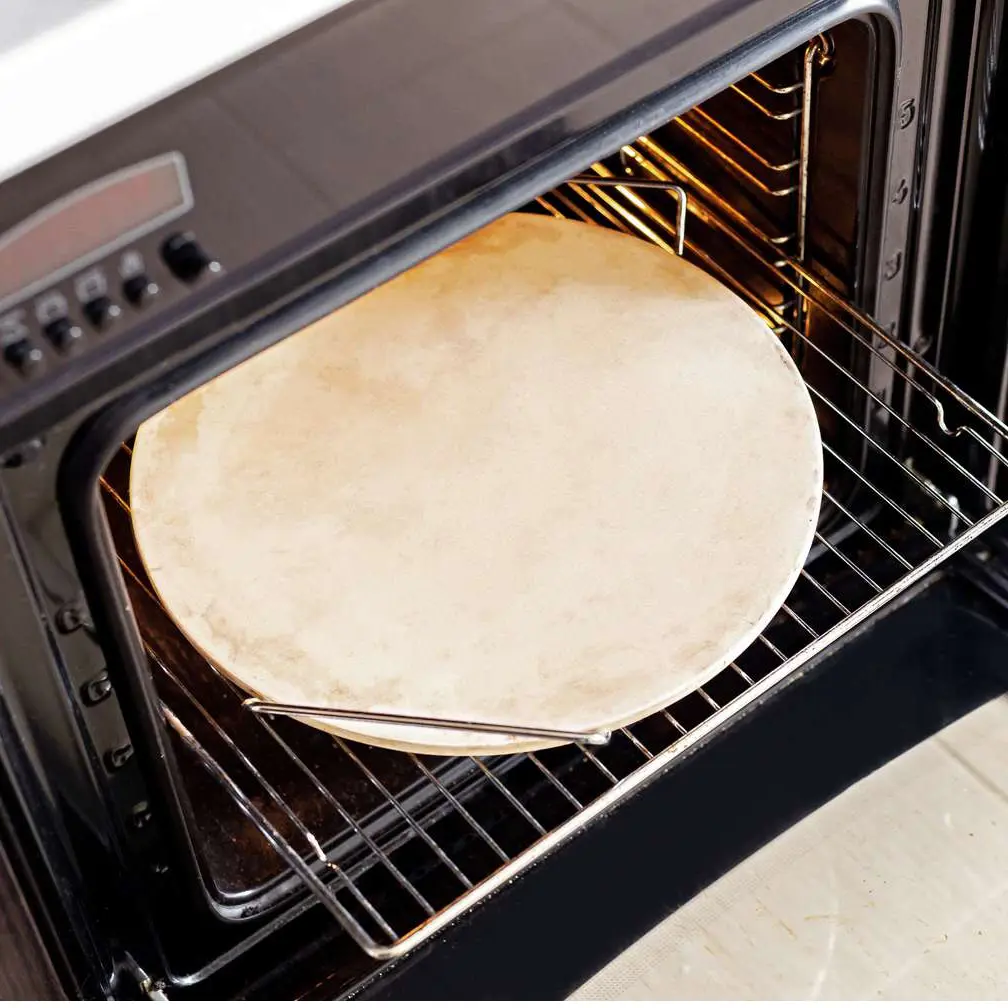
After an hour, switch off the oven but do not take out the stone from it. Let the stone cool down in the oven to room temperature. This cooling of the stone is as important as heating the stone gradually to prevent any cracks or breaks.
If possible, avoid opening the oven door as sudden temperature changes can break the stone.
6. Cleaning :
When cool, use a plastic spatula to gently scrape off loosened food particles from the stone. Be very careful not to scratch the surface. You might notice that some of your discolorations have turned to ash and are much easier to remove.
7. Wipe down:
Finally, use a slightly damp microfiber cloth to wipe down the stone. Keep in mind that it's still a porous stone, so you don't want excess water on it, even after cleaning it in heat. You can try using equal parts water and white vinegar for stubborn spots, but be sure to wipe it off right afterward.
Why You Need To Clean Baking Stone
Cleaning a pizza stone is way more important than it might seem, even if it looks somewhat clean. A pizza stone is always made from stone or ceramic materials, which provide a highly porous nature for your stone.
These are highly prone to absorbing all kinds of substances, which usually occur in pizzas: tomato sauce, oils, cheese, and even pesto. These ingredients are excellent to give your pizza a wonderful taste, but they can be problematic once they stay within the pores of the stone.
In time, these absorbed substances will go rancid and give you two major problems. First, these spoiled flavors would be transferred to other pizzas you will cook in the future with the same stone, altering their flavors and probably ruining your dishes.
Second, and most importantly, old spoiled ingredients building up can be a health hazard by introducing harmful bacteria to your food. For that reason, regular deep cleaning of your pizza stone is not only crucial in maintaining the quality of pizzas but also for the safety of the food you prepare.
How Often To Clean A Pizza Stone
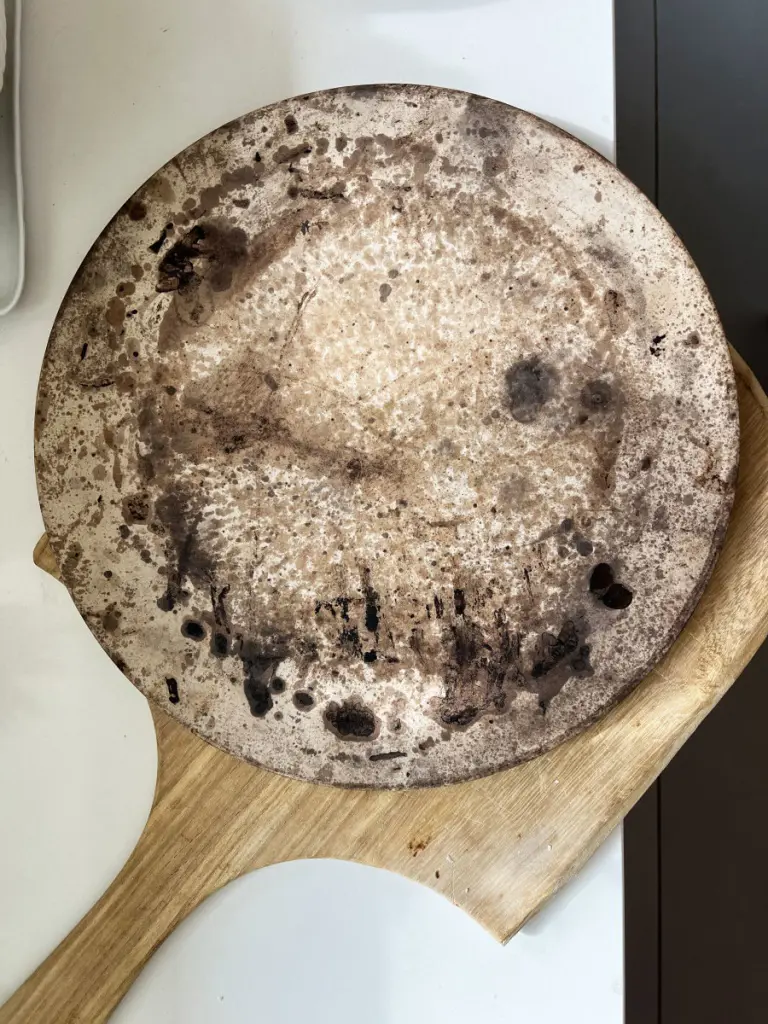
Cleaning your pizza stone will help you achieve maximum efficiency and durability. A pizza stone should be cleaned after every use, which basically requires you to remove any residual elements left on it from the pizza-making session after it has completely cooled down.
Give it at least a good wipe-down as much as possible to take off as much of the visible particles and other residues. When possible, however, do a more intensive cleaning for better results. This deeper cleaning will prevent a long-term build-up of stubborn stains and flavors.
Regular cleaning will keep the cooking surface hygienic and maintain the stone's capability for crispy, evenly cooked pizzas. It is always good to let the stone cool down on its own before trying to clean it. This prevents the possibility of thermal shock, which could further damage the stone.
Tips For Cleaning Cooking Stone
A pizza stone is one of those appliances that ensure a restaurant type of pizza at home, with a crust properly crisped and with toppings cooked just right. Care and maintenance should be done so that your stone keeps on producing such excellent results.
Unlike any other kitchen tool, pizza stones are treated uniquely for their distinctive properties. Let's look at some practical tips and techniques you can follow to keep your pizza stone in prime condition.
1. Keep it pristine:
You could also put a sheet of baking parchment under your pizza crust every time you bake to keep it clean and like new. That would save you a lot of cleaning afterward.
2. Embrace the patina:
Don't be alarmed if your pizza stone darkens over time. It's just a natural patina sign of a well-used stone and not a reflection of poor cleaning habits. The look and feel of seasoning is preferred by many pizza connoisseurs.
3. Avoid oiling or seasoning:
Unlike cast iron cookware, pizza stones must never be oiled or seasoned. It is by nature a porous stone feature that is solely intended to absorb moisture, giving you that perfect crispy crust. Oiling could compromise this ability and affect the quality of your pizzas.
4. Be careful with water:
While you should never soak your pizza stone, you can clean it with a damp cloth fairly safely and efficiently. Too much water can eventually weaken the stone and can cause it to crack or break.
5. To address stains, do it ASAP:
Since you want to keep your stone looking good and not have deeply set stains, you'll need to clean spills or food residue off as soon as it cools down. A plastic scraper or soft-bristled brush works best in cleaning your stones.
6. Get rid of unwanted smells:
If your stone has absorbed unwanted perfumes or odors, here is the trick: make a batch of simple dough flour, water, and yeast-bake on the stone. This dough will absorb the odors from the porous surface. Afterward, throw away the baked dough.
How To Care For A Pizza Stone
Well taken care of, a good pizza stone can last a lifetime. Follow these simple care tips so that your pizza stone will stay in prime condition for many years to come:
- Regular cleaning: After each use, gently scrape off food residue with a plastic scraper or soft brush. Clean the stone when it has cooled down.
- Deal with stubborn stains as soon as possible: Mix a little baking soda into some warm water until it forms a paste. This is applied over the stained area, left in place for a couple of minutes, then scrubbed gently.
- Avoid soaps and oils: Unlike cast iron skillets, pizza stones must never be seasoned or oiled. The liquid will absorb into the porous surface of the stone. This affects the flavor in your pizzas-not to mention causing them potentially to smoke while cooking.
- Air dry it out: Once you have cleaned your pizza stone, let it air dry for quite a while before putting it away or continuing to use it. This is so moisture can't develop inside it and render it cracked or worse, mold.
- Storage: Let your pizza stone be kept in a cool, dry place when not in use. A pizza stone rack or padded storage bag is great for preventing chips or cracks in your stone.

